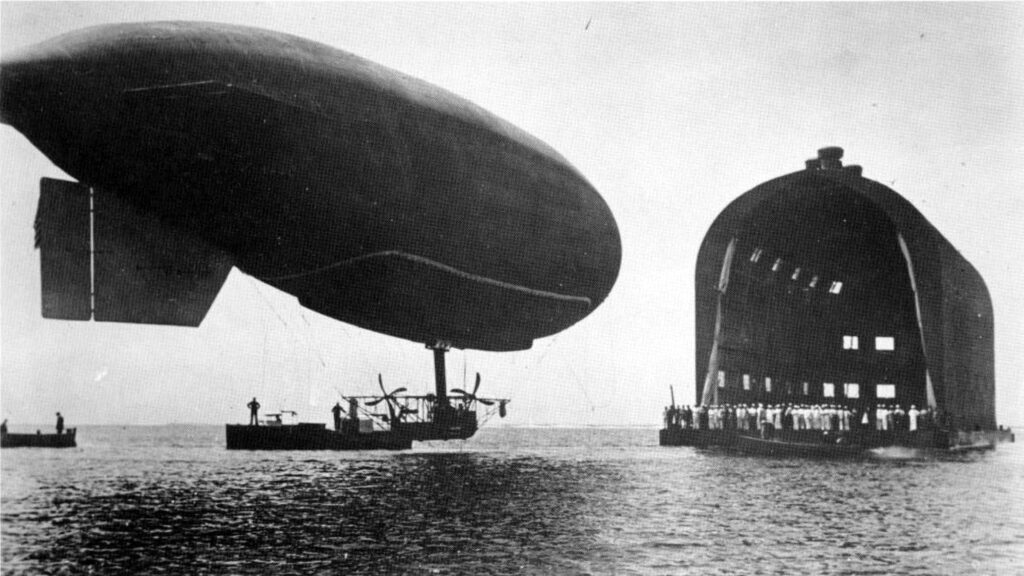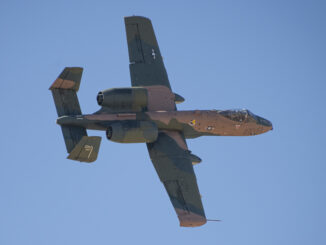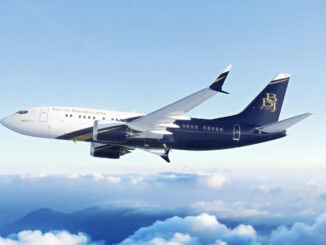
 US Secretary of the Navy Josepus Daniels approved a contract for the first dirigible balloon for the United States Navy.
US Secretary of the Navy Josepus Daniels approved a contract for the first dirigible balloon for the United States Navy.
The First World War was a period marked by a rapid and intensive development of aeroplanes and their use in combat. It was also the time when another type of aircraft, being already known for decades, had a brutish brilliance. An airship or dirigible balloon, speaking of which, became very popular at the beginning of the century, mostly because of German company Luftschiffbau Zeppelin that led the way. It was no surprising that with the outbreak of the Great War, they were used in combat as well.
Already at the beginning of this conflict, on 5th August 1914, the Germans used their ´Zeppelins´ in the first successful bombing raid on the Belgian city of Liège. Along with the further progress of the Great War, the dirigibles were used for various military purposes, mostly bombing and reconnaissance. The ´Zeppelin raids´ created a significant threat for British cities and the potential of the airship was very quickly recognised by other countries, including the United States. And in result, the Americans began to conduct their own trials on development of this type of aircraft.
In April of 1915, the US Navy command issued a bid to develop a dirigible balloon for their purpose. According to the official requirements it had to be of non-rigid type, 175 feet (53 metres) long, 50 feet (15 metres) high and 36 feet (11 metres) wide. It had to reach a speed of 25 mph (40 kph) and yet be able to climb to an altitude of 3,000 feet (914 metres) without a need of removing ballast. Additionally, it was expected to be able to carry a payload of approximately 2,000 pounds (907 kilograms).
At that time, the USA had not participated in the war yet. Therefore, from the beginning, the main task of the first US Navy airship had to be training of pilots and other crew members, as well as further research on this type of aircraft concerning its manoeuvrability. However, as it had to be an aircraft intended for the Navy, its military use was also assumed – it was thought that US Navy dirigibles could be used as bombers to fight enemy submarines, previously detected by reconnaissance aircraft.
Four companies applied to participate in the US Navy bidding process. They were Stanley Yale Beach and American Dirigible Balloon Syndicate of New York, the Goodyear Tire and Rubber Company of Ohio and the Connecticut Aircraft Company of New Haven.
And it was the latter company, the offer of which was finally accepted by the US Secretary of the Navy on 14th May 1915 and subsequently awarded the contract on 1st June that year. The lowest priced bid of 45,636 USD, submitted by the Connecticut-based company, was the deciding factor in this matter. However, on the day its bid was accepted, the Connecticut Aircraft Company had been in business for only two years, having only a few employees. The award of the contract resulted in the company hiring four additional engineers as well as a group of seamstresses to sew the dirigible envelope.
The first US Navy dirigible balloon was designated DN-1 and this marking was not coincidental. The D stands for Dirigible, the N for non-rigid and the number 1 refers to the Navy’s first airship. By design, it was similar to a German Parseval type airship. Its envelope was made of two layers of fabric separated by a layer of rubber. The outer layer was yellow to reduce deterioration by sunlight. Construction of gondola was entrusted to Lawley & Son of Dorchester company from Massachusetts. It had to be watertight – as the airship was intended to take off from and land on water – and had a shape of rectangular box. Two 140 hp engines with four blade propellers, manufactured by B. F. Sturtevant Company of Hyde Park (also of Massachusetts), were installed on outriggers on both sides of the nacelle. In addition, the airship was fitted with a 1.5 hp Indian-branded engine, that was used to maintain air pressure in two internal chambers in the envelope, when the aircraft main engines were not running. The DN-1 was also capable of mooring to berthing mast.
As for parameters – the DN-1 was 175 ft long (53.51 m) and 35 ft (10.67 m) in diameter. However, one of the sources claims its diameter was 55 ft (16.76 m) – presumably, the dimension mentioned as the first takes into account only the diameter of the envelope, while the second is a diameter of the whole airship, including the nacelle.
The DN-1 had an envelope volume of 110,000 ft³ (3,115 m³) or 115,000 ft³ (3,256 m³), depending on the source. It was to be crewed by up to 8 people – four crew members and four student observers. The first Navy aircraft was to reach speeds of up to 25 mph (40 kph) but the maximum speed later achieved during testing was 35 kph (56 kph). The operational flight time was calculated as two hours, with the possibility of doubling it by increasing the amount of fuel, but at the same time reducing the number of crew members.
At the end of 1916, the particular components of DN-1 were transported to Pensacola, where – in a floating hangar specially built for this airship – its final assembly was carried out. Unfortunately, just as tests of the aircraft were about to begin, some issues occurred. On the day when the first trial of the DN-1 was planned to take place, the airship lost lift, settled on water and sank shortly after being removed from the hangar. When it was put back into it, the decision was made to reduce the airship weight by removing one of the engines and in that way secure that further test flights could be performed.
Actual flight testing of the DN-1 began only on 20th April 1917, when the dirigible made its first flight piloted by LCDR Frank M. McCrary USN and LT Stanley V. Parker, who were assisted by PO Jimmy Shade. For the second time, the airship took into the air only a week later, on 27th April, at that time piloted by Hans Stagel – one of the engineers involved in creation of the DN-1 and claimed to be a Zeppelin-expert. Regrettably, two days later, the airship was damaged while being towed on the water. The Navy decided the DN-1 was beyond any repair and meant for scrapping.
In a broader context, this decision was based on problems that were encountered during the test flights. They proved the DN-1 was too heavy and therefore having a lack of adequate lifting power. In addition, the airship envelope was leaking, causing additional loss of lift and the propulsion system was also causing serious issues due to overheating. All together made the aircraft practically inoperable and it was extremely difficult to handle it during the test flights.
Although the operational history of DN-1 was fairly short, it set the direction of airship development programme within the US Navy. In following years, several lighter-than-air aircraft were introduced into the Navy service, being designated as B, C and D-class airships. That´s because the DN-1 was commonly, but unofficially, recognised as an A-class dirigible.
Cover photo – DN-1, Wikipedia, Public Domain,
This article is based on following sources: New York Tribune, newspaper issued on May 15, 1915; New York Tribune newspaper, issued on April 21, 1915; ‘Airships & Dirigibles’ – published on Naval History and Heritage website (www.history.navy.mil);, Wikipedia – The Free Encyclopedia.



